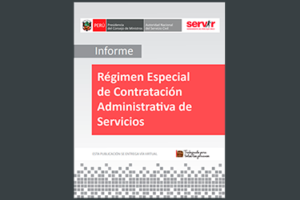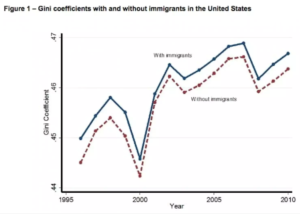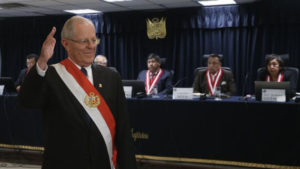‘‘Promoting Real Opportunity, Success, and Prosperity through Education Reform Act’’ (‘‘PROSPER Act’’) Structure
IN THE HOUSE OF REPRESENTATIVES
Ms. FOXX (for herself and Mr. GUTHRIE) introduced the following bill; which
was referred to the Committee on
A BILL
To support students in completing an affordable postsecondary education that will prepare them to enter the workforce with the skills they need for lifelong success.
1 Be it enacted by the Senate and House of Representa-
2 tives of the United States of America in Congress assembled,
3 SECTION 1. SHORT TITLE; TABLE OF CONTENTS.
4 (a) SHORT TITLE.—This Act may be cited as the
5 ‘‘Promoting Real Opportunity, Success, and Prosperity
6 through Education Reform Act’’ or the ‘‘PROSPER Act’’.
7 (b) TABLE OF CONTENTS.—The table of contents for
8 this Act is as follows:
Sec. 1. Short title; table of contents.
Sec. 2. References.
Sec. 3. General effective date.
TITLE I—GENERAL PROVISIONS
PART A—DEFINITIONS
Sec. 101. Definition of institution of higher education.
Sec. 102. Institutions outside the United States.
Sec. 103. Additional definitions.
Sec. 104. Regulatory relief.
PART B—ADDITIONAL GENERAL PROVISIONS
Sec. 111. Free speech protections.
Sec. 112. National Advisory Committee on Institutional Quality and Integrity.
Sec. 113. Repeal of certain reporting requirements.
Sec. 114. Programs on drug and alcohol abuse prevention.
Sec. 115. Campus access for religious groups.
Sec. 116. Secretarial prohibitions.
Sec. 117. Ensuring equal treatment by governmental entities.
PART C—COST OF HIGHER EDUCATION
Sec. 121. College Dashboard website.
Sec. 122. Net price calculators.
Sec. 123. Text book information.
PART D—ADMINISTRATIVE PROVISIONS FOR DELIVERY OF STUDENT FINANCIAL ASSISTANCE
Sec. 131. Performance-based organization for the delivery of Federal student financial assistance.
Sec. 132. Administrative data transparency.
PART E—LENDER AND INSTITUTION REQUIREMENTS RELATING TO EDUCATION LOANS
Sec. 141. Modification of preferred lender arrangements.
PART F—ADDRESSING SEXUAL ASSAULT
Sec. 151. Addressing sexual assault.
TITLE II—EXPANDING ACCESS TO IN-DEMAND APPRENTICESHIPS
Sec. 201. Repeal.
Sec. 202. Grants for access to high-demand careers.
TITLE III—INSTITUTIONAL AID
Sec. 301. Strengthening institutions.
Sec. 302. Strengthening historically Black colleges and universities.
Sec. 303. Historically Black college and university capital financing.
Sec. 304. Minority Science and Engineering Improvement Program.
Sec. 305. Strengthening historically Black colleges and universities and other minority-serving institutions.
Sec. 306. General provisions.
TITLE IV—STUDENT ASSISTANCE
PART A—GRANTS TO STUDENTS IN ATTENDANCE AT INSTITUTIONS OF
HIGHER EDUCATION
Sec. 401. Federal Pell Grants.
Sec. 402. Federal TRIO programs.
Sec. 403. Gaining early awareness and readiness for undergraduate programs.
Sec. 404. Special programs for students whose families are engaged in migrant
and seasonal farmwork.
Sec. 405. Child care access means parents in school.
Sec. 406. Repeals.
Sec. 407. Sunset of TEACH grants.
PART B—FEDERAL FAMILY EDUCATION LOAN PROGRAM
Sec. 421. Federal Direct Consolidation Loans.
Sec. 422. Loan rehabilitation.
Sec. 423. Loan forgiveness for teachers.
Sec. 424. Loan forgiveness for service in areas of national need.
Sec. 425. Loan repayment for civil legal assistance attorneys.
Sec. 426. Sunset of cohort default rate and other conforming changes.
Sec. 427. Closed school and other discharges.
PART C—FEDERAL WORK-STUDY PROGRAMS
Sec. 441. Purpose; authorization of appropriations.
Sec. 442. Allocation formula.
Sec. 443. Grants for Federal work-study programs.
Sec. 444. Flexible use of funds.
Sec. 445. Job location and development programs.
Sec. 446. Community service.
Sec. 447. Work colleges.
PART D—FEDERAL DIRECT STUDENT LOAN PROGRAM
Sec. 451. Termination of Federal Direct Loan Program under part D and other conforming amendments.
Sec. 452. Borrower defenses.
Sec. 453. Administrative expenses.
Sec. 454. Loan cancellation for teachers.
PART E—FEDERAL ONE LOANS
Sec. 461. Wind-down of Federal Perkins Loan Program.
Sec. 462. Federal ONE Loan program.
PART F—NEED ANALYSIS
Sec. 471. Cost of attendance.
Sec. 472. Simplified needs test.
Sec. 473. Discretion of student financial aid administrators.
Sec. 474. Definitions of total income and assets.
PART G—GENERAL PROVISIONS RELATING TO STUDENT ASSISTANCE
Sec. 481. Definitions of academic year and eligible program.
Sec. 482. Programmatic loan repayment rates.
Sec. 483. Master calendar.
Sec. 484. FAFSA Simplification.
Sec. 485. Student eligibility.
Sec. 486. Statute of limitations.
Sec. 487. Institutional refunds.
Sec. 488. Information disseminated to prospective and enrolled students.
Sec. 489. Early awareness of financial aid eligibility.
Sec. 490. Distance education demonstration programs.
Sec. 491. Contents of program participation agreements.
Sec. 492. Regulatory relief and improvement.
Sec. 493. Transfer of allotments.
Sec. 494. Administrative expenses.
Sec. 494A. Repeal of advisory committee.
Sec. 494B. Regional meetings and negotiated rulemaking.
Sec. 494C. Deferral of loan repayment following active duty.
Sec. 494D. Contracts; matching program.
PART H—PROGRAM INTEGRITY
Sec. 495. Repeal of and prohibition on State authorization regulations.
Sec. 496. Recognition of accrediting agency or association.
Sec. 497. Eligibility and certification procedures.
TITLE V—DEVELOPING INSTITUTIONS
Sec. 501. Hispanic-serving institutions.
Sec. 502. Promoting postbaccalaureate opportunities for Hispanic Americans.
Sec. 503. General provisions.
TITLE VI—INTERNATIONAL EDUCATION PROGRAMS
Sec. 601. International and foreign language studies.
Sec. 602. Business and international education programs.
Sec. 603. Repeal of assistance program for Institute for International Public
Policy.
Sec. 604. General provisions.
TITLE VII—GRADUATE AND POSTSECONDARY IMPROVEMENT
PROGRAMS
Sec. 701. Graduate education programs.
Sec. 702. Repeal of Fund for the Improvement of Postsecondary Education.
Sec. 703. Programs for students with disabilities.
Sec. 704. Repeal of college access challenge grant program.
TITLE VIII—OTHER REPEALS
Sec. 801. Repeal of additional programs.
TITLE IX—AMENDMENTS TO OTHER LAWS
PART A—EDUCATION OF THE DEAF ACT OF 1986
Sec. 901. Education of the Deaf Act of 1986.
PART B—TRIBALLY CONTROLLED COLLEGES AND UNIVERSITIES ASSISTANCE
ACT OF 1978; DINE′ COLLEGE ACT
Sec. 911. Tribally Controlled Colleges and Universities Assistance Act of 1978.
Sec. 912. Dine′ College Act.
Taken from: edworkforce.house.gov
See: Republican-proposed bill could overhaul student loan process






